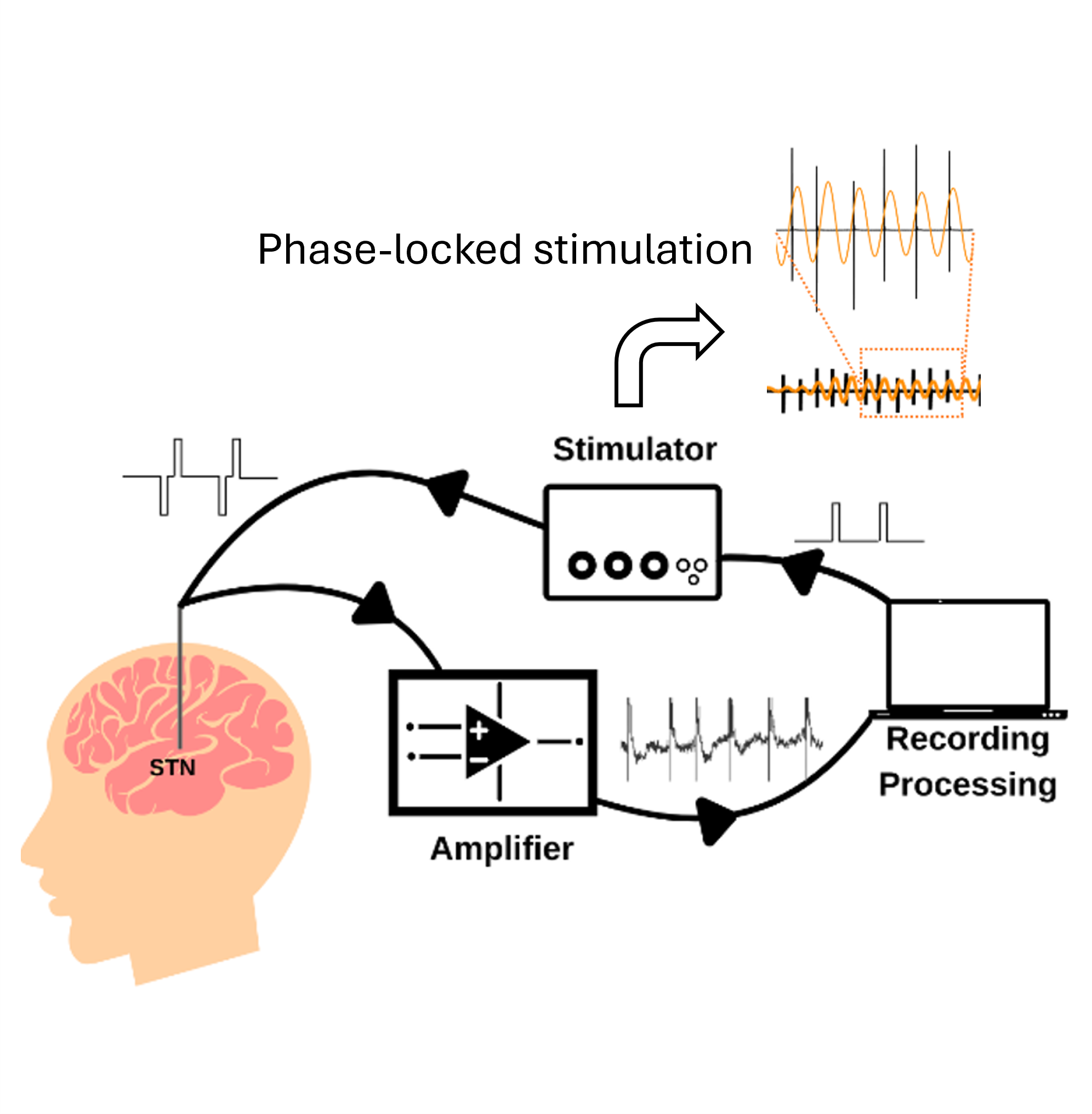Flexible and stable cycle-by-cycle phase-locked deep brain stimulation system targeting brain oscillations in the management of movement disorders.
Abnormal brain rhythms are linked to symptoms in Parkinson's disease. This study developed a system that delivers deep brain stimulation (DBS) precisely aligned with specific moments, or "phases," of brain oscillations. The findings revealed that the timing of stimulation significantly influences both neural activity and motor performance. This discovery could pave the way for smarter, personalised DBS therapies to better manage symptoms.
Background Precisely timed brain stimulation, such as phase-locked deep brain stimulation (PLDBS), offers a promising approach to modulating dysfunctional neural networks by enhancing or suppressing specific oscillations. However, its clinical application has been hindered by the lack of user-friendly systems and the challenge of real-time phase estimation amid stimulation artifacts.
Methods In this work, we developed a clinically translatable PLDBS framework that enables real-time, cycle-by-cycle stimulation using standard amplifiers and a computer-in-the-loop system. Our approach integrates Kalman filter-based artifact suppression and non-resonant oscillators for accurate phase tracking. We tested this system in a small clinical trial (n = 4) targeting subthalamic nucleus (STN) stimulation at specific phases of cortical alpha and STN beta rhythms in patients with movement disorders during acute lead externalization following deep brain stimulation surgery.
Results The system delivered stimulation with over 90% accuracy, within ±π/2 for STN beta and ±π/4 for cortical alpha. Stimulations delivered at different STN beta phases led to a significant difference in evoked potentials in STN local field potentials in all participants. STN beta-triggered stimulation showed potential phase-dependent modulation of finger-tapping velocity and amplitude in Parkinson's disease.
Conclusions This study presents a flexible and stable pipeline for precise PLDBS with CE-marked devices and a computer-in-the-loop. Using this pipeline, we showed that PLDBS at different STN beta phases differentially modulates the evoked action potentials in the STN and motor behavior used to quantify bradykinesia, paving the way for further studies and clinical trials for PLDBS.

2022. NPJ Parkinsons Dis, 8(1):88.
2025. Mov Disord, 40(3):456-467.